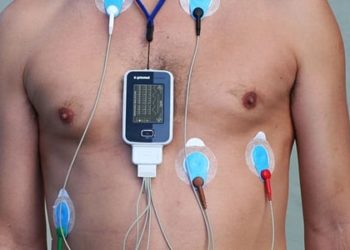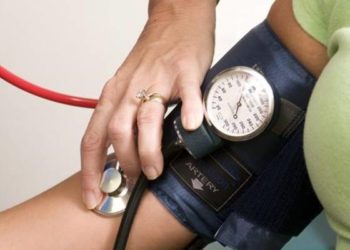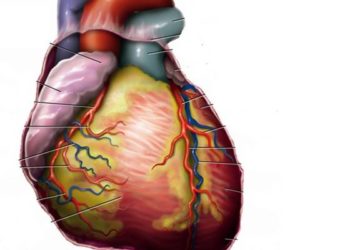2 Minute Medicine Rewind May 23, 2016
Rate Control versus Rhythm Control for Atrial Fibrillation after Cardiac Surgery
Atrial fibrillation, the most common post-operative complication of cardiac surgery, results in an increased risk for hospitalizations and other adverse events including death. This randomized trial conducted at 23 sites in the US and Canada enrolled 2,109 patients scheduled to undergo elective cardiac surgery to determine whether rate or rhythm control is more effective in the treatment of post-operative atrial fibrillation. Of the 2,109 patients, 695 developed atrial fibrillation (33%) and 523 of those patients were randomized. In the rate control group, patients were given medications with a goal of lowering the rate below 100 beats per minute while, in the rhythm control group, amiodarone was given before hospital discharge and recommended for 60 days afterward. For both groups, warfarin was given 48 hours after randomization if atrial fibrillation persisted. The investigators selected a primary outcome of total days hospitalized within 60 days of randomization. Secondary outcomes included length of the first hospitalization, serious complications, the need for permanent placement of a pacemaker, re-admission rates, and death. The primary end point yielded no significant difference between the groups (5.1 days for the rate control vs. 5.0 days for the rhythm control group, P = 0.76). No significant difference was found between the two groups in terms of serious complications (p = 0.61), readmission rates (p = 0.99), or death rates (p = 0.64). It was concluded that neither of these techniques for the initial treatment of post-operative atrial fibrillation is clinically superior to the other.
Psilocybin, a psychedelic naturally occurring serotonin receptor agonist, has been preliminarily shown to have potential therapeutic benefits on several mental health disorders, such as anxiety and obsessive-compulsive disorder. This study, an open-label feasibility trial, enrolled 12 patients with treatment-resistant unipolar depression to examine the safety, efficacy, and feasibility of psilocybin use on this condition. Under supervision, these patients were given 10 mg and 25 mg doses of psilocybin seven days apart, with psychological support provided before, during, and after administration. In addition to monitoring for adverse events in order to assess safety, the 16-item Quick Inventory of Depressive Symptoms (QIDS) was taken at appointments from 1 week to 3 months post-treatment in order to assess efficacy. Additionally, feasibility was assessed by asking the patients to rate the intensity of the psychedelic effects on a 0 to 4 scale, with 0 indicating no effects and 4 indicating extreme effects. The investigators found that psilocybin was well tolerated and no serious adverse events occurred as a result of its use. However, transient anxiety as the drug onset was observed in all patients, temporary confusion occurred in 9 patients, and transient headaches and nausea occurred in 4 patients each. QIDS scores changed by an average of -11.8 (95% CI: -9.15 to -14.35; P = 0.02) a week after the high dose treatment and changed by an average of -9.2 (95% CI: -5.69 to -12.71; P = 0.003) three months out from the high dose treatment. Psilocybin use was also shown to have a positive effect on anhedonia and anxiety. Finally, after being normalized to a 0 to 1 scale, the mean intensity rating was 0.51 for the low dose psilocybin and 0.75 for the high dose. These results are preliminary indications that psilocybin may be suitable for the treatment of refractory unipolar depression. More studies are needed to assess how psilocybin can be effectively and safely utilized.
Long-term neurodevelopmental delay and encephalopathy of prematurity are two potential complications of an infant being born very prematurely. In this study, recombinant human erythropoietin, which has been shown to be neuroprotective, is investigated as a potential treatment for this population. This multicenter, randomized controlled trial conducted in Switzerland from 2005 to 2012 enrolled 448 neonates born between 26 and 32 weeks gestation. Participants were intravenously infused with either recombinant erythropoietin (3000 IU/kg) or isotonic saline at three time points (within 3 hours of the time of birth, between 12 and 18 hours after birth, and from 36 to 42 hours after birth). The Mental Developmental Index (MDI) of the Bayley Scales of Infant Development was used to assess the primary outcome of cognitive development at two years corrected age. Additional outcomes observed included motor development, anthropometric growth measurements, incidence of cerebral palsy, and hearing or visual impairment. In follow-up, 365 of these preterm infants were evaluated for neurodevelopmental outcome at a mean age of 23.6 months. There was was not a statistically significant difference in the mean MDI between the groups, yielding a difference of -1 between the erythropoietin arm and the control arm (95% CI, -4.5 to 2.5; P = 0.56). In addition, no statistically significant results were found in the other outcomes previously listed. Based on this data, there is no benefit to the erythropoietin therapy in very preterm infants.
Three quarters of those above 75 years of age in the United States have hypertension, but the target systolic blood pressure for that age group remains uncertain. This multicenter, randomized controlled trial aimed to compare the standard systolic blood pressure target of 140 mmHg or less to intensive therapy that aimed to keep the systolic blood pressure less than or equal to 120 mmHg. 2,636 patients over the age of 75 with systolic blood pressures of at least 130 mmHg at baseline and increased risk for cardiovascular disease were randomized to the standard blood pressure control group (n = 1319) or the intensive group (n = 1317). Investigators compared the rates of death from cardiovascular causes, nonfatal myocardial infarction or stroke, and nonfatal acute decompensated heart failure together as singular composite primary outcome. All-cause mortality was looked at as a secondary outcome. After a median of 3.14 years of therapy, the study resulted in a statistically significant difference in the composite outcomes, yielding a hazard ratio of 0.66 (95% CI: 0.51 to 0.85) for intensive therapy relative to treatment guided by the standard systolic blood pressure target. All-cause mortality was also lower for the intensive therapy, resulting in a hazard ratio of 0.67 (95% CI: 0.45 to 0.91). There was no statistically significant difference between the rates of serious adverse events, as 48.4% of patients in the intensive treatment group experienced these events as compared to 48.3% of those in the standard control group. However, hypotension was shown to have a hazard ratio of 1.71 (95% CI, 0.97 to 3.09) and electrolyte abnormalities gave a hazard ratio of 1.51 (95% CI, 0.99 to 2.33) when comparing the intensive treatment group to the standard group. The investigators concluded that, in the 75 years and over age group, targeting the systolic blood pressure to 120 mmHg resulted in less major cardiovascular events and less all-cause mortality.
Potato Intake and Incidence of Hypertension: Results from Three Prospective US Cohort Studies
Recently restrictions have been lifted on how many servings of potatoes can be in governmentally subsidized school lunches, as well as federal programs designed to provide nutritious food to women, infants, and children. This compilation of prospective longitudinal cohort studies aims to investigate the relationship between potato consumption and incidence of hypertension. Participants were recruited from pre-existing studies on the health of healthcare providers, resulting in 36,803 men and 150,650 women enrolled. These participants were non-hypertensive at baseline and had filled out the necessary semi-quantitative food frequency questionnaires throughout their time in the pre-existing studies. In these surveys, participants were asked about their consumption of boiled, baked, or mashed potatoes, French fries, and potato chips and had to select between nine categories to indicate the frequency with which they ate each of those foods. For self-reported hypertension diagnoses, the study showed a hazard ratio of 1.17 (95% CI, 0.96 to 1.28) for four servings of French fries per week as compared to less than one. Identical comparisons for baked, boiled or mashed potatoes, as well as potato chips were made and showed hazard ratios of 1.11 (95% CI, 0.96 to 1.28) and 0.97 (95% CI, 0.87 to 1.08), respectively. The study also showed that substituting one serving of non-starchy vegetables for a serving of baked, broiled, or mashed potatoes resulted in a hazard ratio of 0.93 (95% CI, 0.89 to 0.96) for hypertension. Within these large cohorts, there was an association between consumption of potatoes and hypertension. This led the investigators to recommend against its inclusion in federally subsidized nutritious meals, however follow-up studies would need to be done to further validate the association.
Image: PD
©2016 2 Minute Medicine, Inc. All rights reserved. No works may be reproduced without expressed written consent from 2 Minute Medicine, Inc. Inquire about licensing here. No article should be construed as medical advice and is not intended as such by the authors or by 2 Minute Medicine, Inc.







